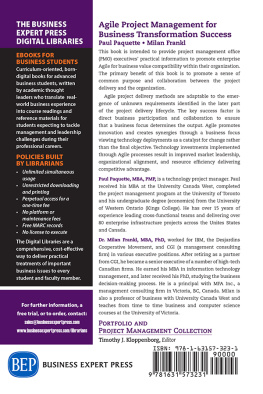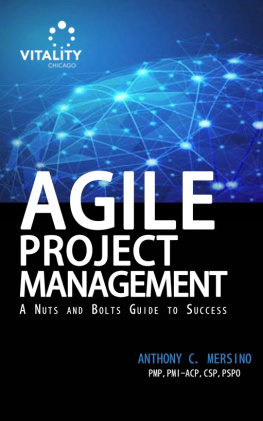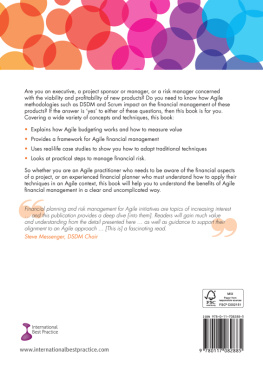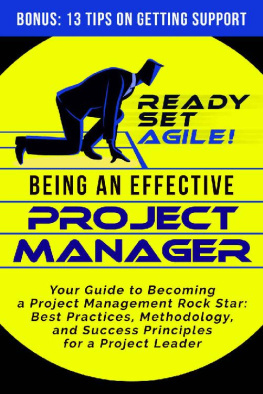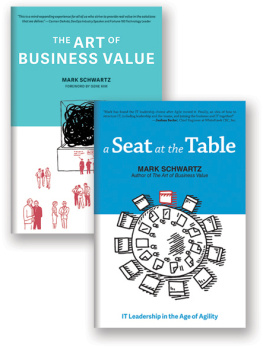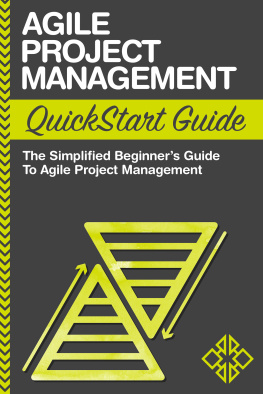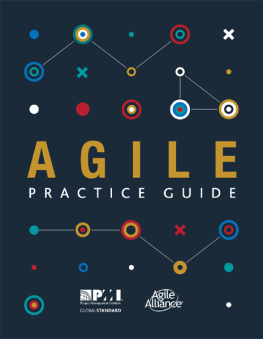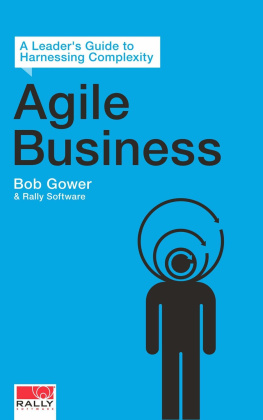Big data, advanced analytics, virtualization, cloud, e-commerce, mobile, enterprise resource planning, and other disruptive technologies challenge organizations to adapt to the accelerated changes occurring in business environments today. Business Transformation (BT) projects leverage these technologies to create change within the organization to improve performance and competitive advantage. BT projects are particularly challenging because they demand significant changes in both technical and business domains such as business processes, and engagement with clients or suppliers. Furthermore, BT technology projects are essential to the competitive survival and new strategic direction of the organization and, therefore, must not fail.
Agile project methods provide a new approach addressing the limitations of traditional Waterfall projects.
The primary data research is unique because it promotes assessing, ranking, and analyzing typical Agile attributes from a business perspective, which include market leadership, organizational alignment, and resource efficiency. Agile project management techniques improve the business value and performance promise of these technologies and are superior to the traditional project-centric contractual focus.
Agile encourages successful BT technology deployment as a paradigm shift rather than a planned incremental system and process improvement. Agile promotes innovation and creates synergies through a business focus viewing technology deployments as a catalyst for change rather than the final objective. Agile values and promotes communication both horizontally and vertically throughout the organization. Agile enhances innovation through high-performance multidisciplinary teams and ensures business value by direct client involvement throughout the entire delivery process.
Enhanced communication, teamwork, collaboration, and organizational change improve the adoption of higher business value products during the preliminary stages and throughout the project lifecycle. Ensuring governance and enterprise suitability are a challenge for Agile, and the literature has confirmed that very large organizations continue to address these concerns.
Agile promotes improved BT project delivery performance and competitive advantage when viewed from a business perspective. Agile or the inclusion of Agile methods within a hybrid project delivery method provides superior business value over the traditionally dominant Waterfall project delivery alone.
Introduction
In we introduce Agile concepts, including challenges addressed by Agile, and process improvements expected. Furthermore, we compare the Agile project management method to that of the conventional project management one. Finally, we discuss Agile implications on business involvement and enterprise support.
We use the term Agile throughout this book to refer the Agile Project Management or Agile Project Delivery as project-related work based on fundamental principles as defined by the Agile Manifesto (Beck et al. 2001).
Agile methods are adopted primarily from Scrum and Extreme Programming (XP) practices, philosophies, and principles upon which they were founded.
The term Waterfall refers to the common and more traditional project delivery methods frequently used for deploying systems integration projects outside the application development community.
In contrast to Agile, Waterfall demands collection of all requirements, the contractual alignment, and satisfaction of deliverables against a plan within the constraints of time, scope, and schedule through a linear set of sequential activities. These activities are analysis, design, implementation, testing, and evaluation. They are completed before the next activity is initiated and graphically represented in a waterfall pattern.
The term Business Transformation (BT ) is used throughout this book to summarize any critical enterprise strategic technology projects intended to enhance the organizations competitive advantage within the business environment operated by the firm.
Agile and Waterfall processes and methods are compared for suitability with BT projects from an organizational and business perspective. Using this comparison we present the traditional Agile context as a software development tool by extending application into an enterprise (large) context.
Traditional Waterfall project management processes fail to deliver anticipated results because the requirements are not fully understood at the beginning of the project. The formal project change record (PCR) process is a method organizations use to control scope creep by formalizing a management review process to accept or reject changes in the estimated project baseline. However, this process is too cumbersome to adapt to changing business conditions and evolving requirements through the execution phase. As a result, business users become dissatisfied by the bureaucracy.
BT software projects are particularly challenging because the technology is new and demands customization to comply with the clients specific requirements. BT projects disrupt the status quo and have implementation complexity within an environment of turmoil, distress, and change. To accommodate BT projects unique characteristics, an iterative project method with feedback loops and increased information flow is required instead of the traditional linear and sequential waterfall method. A holistic organizational view including technical and business elements is essential to deliver the business results in which project investment was intended to satisfy.
Complex technology integration projects are a means for organizations to improve business processes frequently characterized as multimillion dollar investments while experiencing a 60 percent delivery failure rate (Hasibuan and Dantes 2012), which is considered to be very high. Enterprise system integration and transformation projects are regarded as unique and technically very challenging, combining evolving sophisticated technologies. They require new business processes across the entire organization. These projects combine innovative technologies to change the way executives perceive their customers and view their data and business environment. In addition, they extend pervasively throughout the organization as managers and employees interact more effectively with customers. Although the projects are considered high-risk, expensive, and complex, they provide organizations the innovation and competitive advantages required to remain aggressive in the global marketplace.
Agile is an essential paradigm shift for organizations to improve project delivery success rates (Standish Group 2013). Agile techniques improve technology project performance by enhancing the stakeholders feedback loop. Agile techniques provide organizations with a source of competitive advantage while reducing risk by providing business value earlier and consistently throughout the Project Delivery Life Cycle (PDLC). Agile techniques increase the organizational competitive advantage through better organizational change management, communication, and teamwork.
The Agile teamwork advantage is characterized by high-performance teams improving performance through cooperation, collaboration, and enhancing individuals skill development and of empowered employees. Agile project teams are made of up individual members across multiple knowledge domains. Members may include accountants, marketing analysts, front line, and other business users to work directly with technology developers and programmers. Technology projects require special stakeholders relationships demanding enhanced project governance and executive management sponsorship because of their expense, risk, and potential opportunity.
Agile Project Management for BT success is intended to provide the reader with two chief primary deliverables. The first is the identification of common problems with traditional Waterfall methods that limit project delivery success and provide Agile elements as a solution. The second is the presentation of a ranked order of the most effective Agile attributes from a business context of market leadership, organizational alignment, and resource efficiency.
Next page
